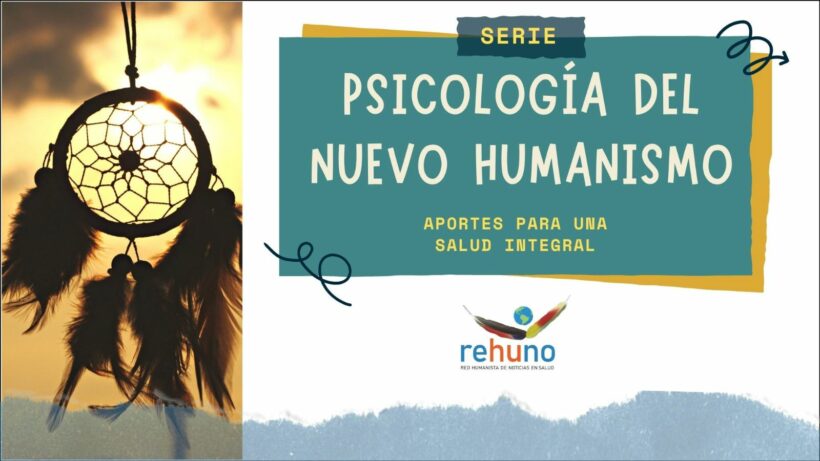From the Humanist Health News Network REHUNO Health we set up a place of exchange where we find a new look at daily life based on experiential and existential psychology (the Psychology of New Humanism), which gives some concrete proposals of personal work to reach a full meaning of our existence and a life free of unnecessary suffering. It is not, therefore, therapeutic psychology, nor does it deal with any pathology, but is aimed at anyone who wants to understand themselves and have the tools, if they so wish, to initiate a positive change in their lives. Psychological well-being is undoubtedly one of the foundations of integral health, which is why it is an aspect that needs to be addressed.
We invite you to put these proposals into practice and also to contact us and tell us about your experience. Write to us!
By Jordi Jiménez
The word “unique” is put in inverted commas for two reasons: on the one hand, the interpretations of dreams that used to appear in literature were based on giving a single, standard meaning to the images that appear in dreams (a house always means X, a fire always means Y…), when in reality each person can give a different meaning to the same image; on the other hand, even if you interpret your own images, the meaning of each image can vary from one dream to another depending on the context, so the interpretation of the story will also change.
So, there will never be a single interpretation of dream images for different people, even for oneself at different times. How is this possible? Because the meaning of mental images is determined by the emotional climate that accompanies them and by the context of the dream “narrative”. The same is true for reveries (Levels of consciousness: from dream to awakening).
For example, there are dreams in which the house where I live fulfills a protective function and other dreams in which the house fulfills a limiting or suffocating function as if it were enclosed. In addition, the same person can dream at different times in their life with the image of their house fulfilling opposite functions because their life situation has changed and the house is no longer the same as before for that person. Another case: if there is a fire burning in my house, and I observe it from outside, I can feel that the fire is destructive, in the first case, or I can feel that the fire is liberating, in the second case (as long as I am not inside the house, of course). It is the same image of fire, but depending on the object it burns (the protective house or the suffocating house) it takes on very different meanings, not for its own sake, but for the function it fulfills in the dream narrative. And this does not only happen with tangible objects. I can dream that I am alone in a deserted place and feel fear or anguish in the face of this loneliness, or I can feel that infinite paths to the future are open to me and that I can go wherever I want. In this case, loneliness as a situation also fulfills opposite functions in the dream, depending on the dreamer’s life situation.

Therefore, we see that we cannot point to unique interpretations of dreams nor trust in the meanings that were published out there in the past since it is highly probable that they have no relation with what happens to one. Having cleared up this issue of false universal interpretations, let’s move on to what we are interested in, which is a technique for it to make our dream interpretation.
Exercise to interpret our dreams
First of all, we have to write down on a piece of paper the story of the dream to interpret with all the images that appear in it. Afterwards, in a table with two columns we write in the first column, and in the order in which they appeared, all the images of the dream: they can be objects or very concrete actions. In the second column, we write down the meaning that this concrete object or action has for me. And this is where the interesting thing is. One has to look for a peculiarity of meaning for each object in that particular dream. Finally, once the meanings have been written down in the second column, the story is rewritten, but replacing each word with the meaning I have attributed to it.
Let’s take an example of a scene from a dream:
“I am kneeling in a narrow tunnel. In front of me there is a thick wooden door ajar, daylight is visible. When I try to get out of the tunnel, I am unable to do so and notice that a vehicle is blocking the door. Behind me there is a thick wall, I get desperate and try to retreat.”
We rescue the objects and situations from the story:
Being on my knees, 2. Tunnel, 3. Tunnel door, 4. Daylight, 5. Car, 6. Wall behind.
And now we look for the meaning of each element for us:
1. Being defeated, 2. Trapped, 3. Wanting to escape or move on 4. A better life, 5. A way of going through life, 6. The past.
Notice that in this case, the person attributes the meaning of the image of the car as “a way of going through life”. It is no use saying that a car is a means of transport, that is the dictionary meaning. It is the same with the tunnel, it is no use saying that it is a dark place, that is obvious. It is necessary to look for what each element represents in that dream for the person who was dreaming it. This search for meaning may require stopping for a moment, reflecting without haste, and trying to discover what emotional climate accompanied that image in that dream. If for me doors mean escapes or breakthroughs, they mean that and not something else, no matter how much others may say that doors symbolize I don’t know what according to myths or ancient beliefs.
Once the meanings of the elements of the dream have been worked out separately, it is time to replace them in the dream story. In our example, the story would look like this:
“I feel trapped and defeated by something in myself and when I want to escape from it and go on to a better life, I am prevented by the way I go through life.
In despair, I try to escape into the past without realizing that this is already impossible”.
As you can see, the story rewritten with the meanings of each element takes on a much more interesting aspect. It can be said that this rewritten account is the interpretation of this dream for this person, and this interpretation is telling the dreamer about a life situation that he or she is living and that on the ordinary vigil level goes unnoticed. However, in the free images of the dream, a narrative is strung together that tries to order and give a way out of this situation, only the story is allegorized in images. Therefore, it is necessary to correctly interpret the meanings of these images in order to unveil (remove the veil) the work that the consciousness is trying to do with this vital situation.
In the previous article, we said that the consciousness, on the level of sleep, not only rests (in the vegetative sleep phase) but also engages in an intense work of reordering lived experiences. By unveiling the meaning of dreams in this way, we can indeed see the enormous work that consciousness does in the paradoxical sleep phase.
We hope you found it interesting and if you want to send us a dream by e-mail, we can help you to interpret it according to your own meanings.










